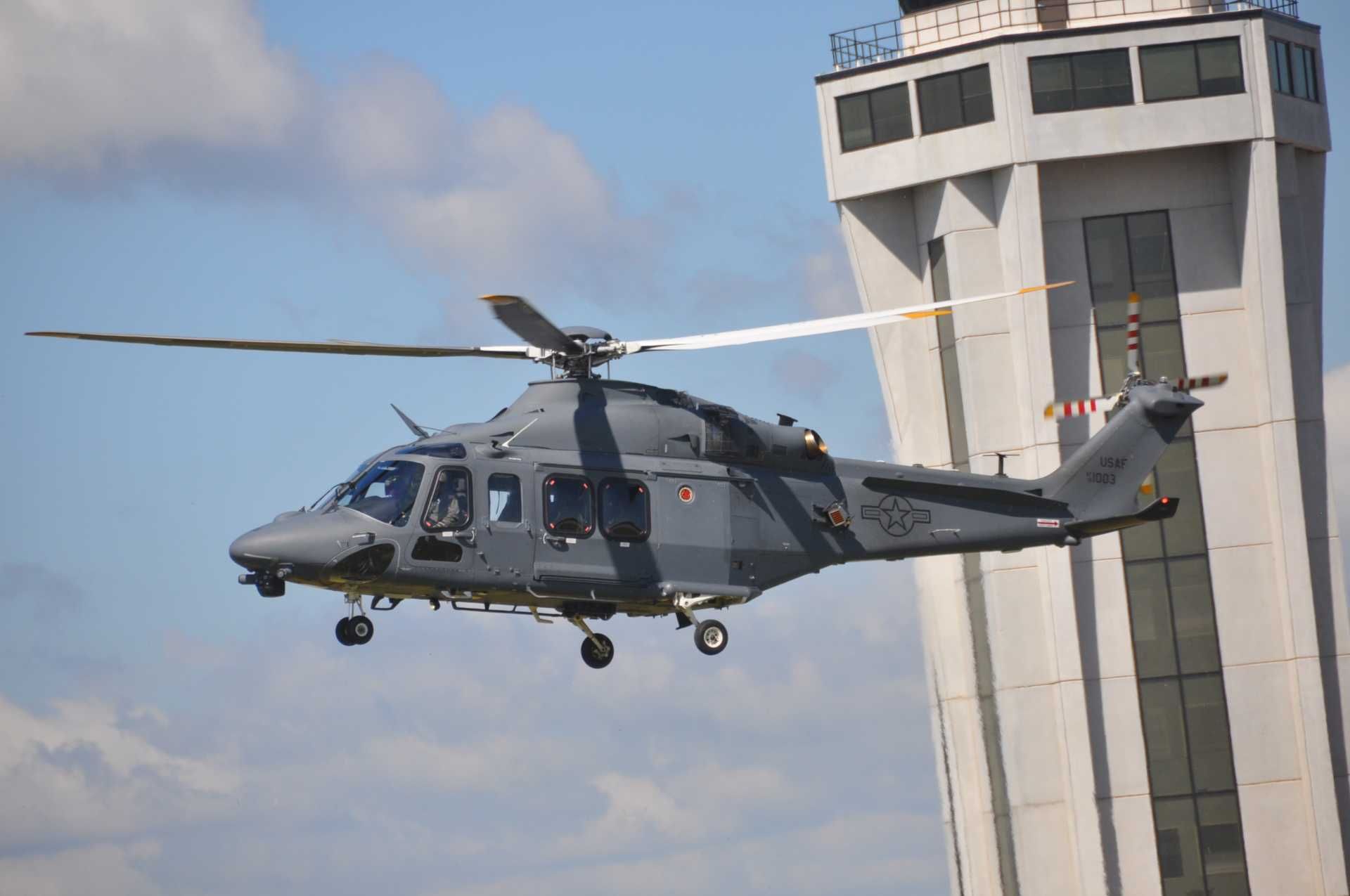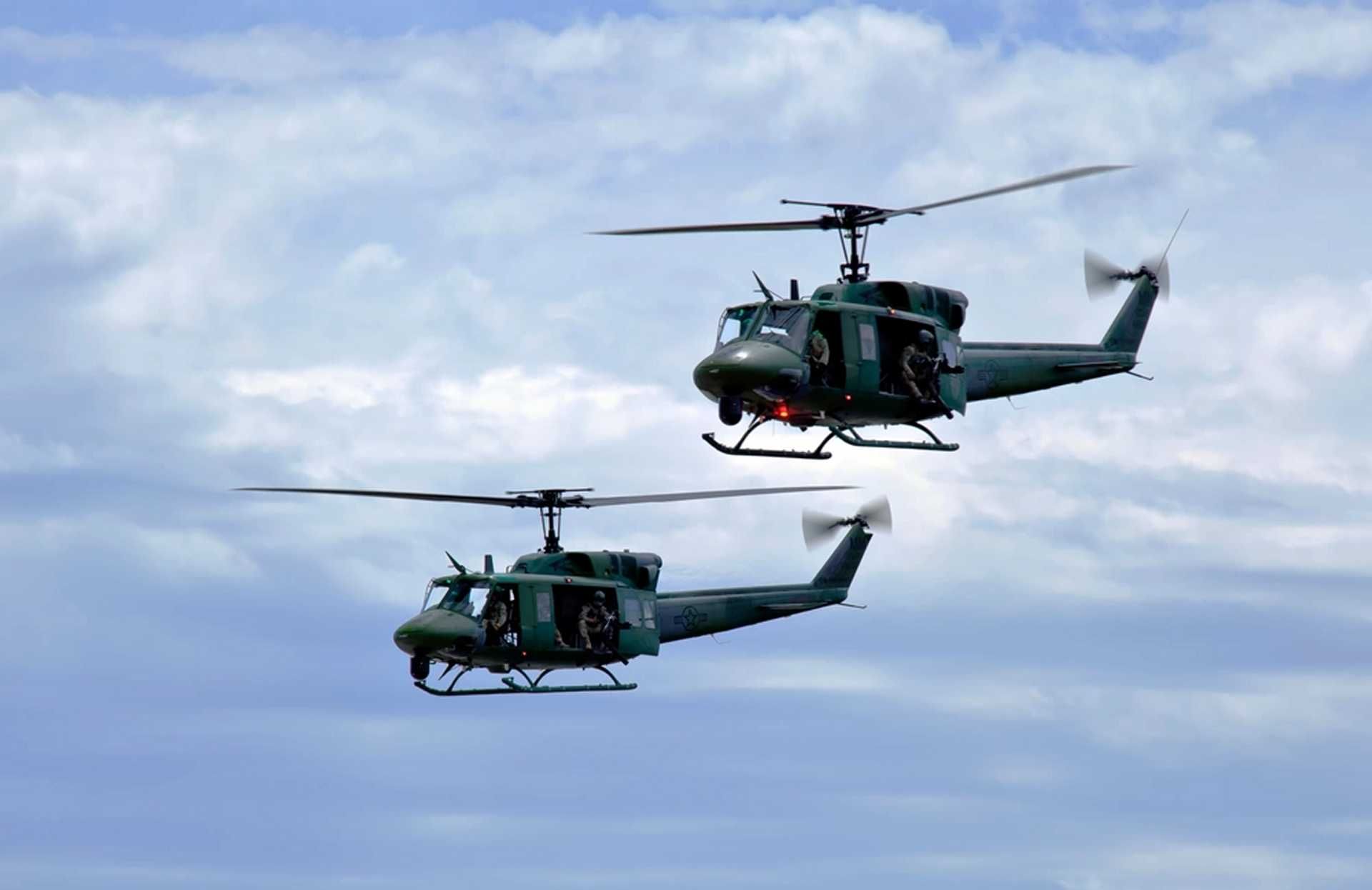Breaking News
US Air Force deploys sixth MH-139A Grey Wolf helicopter to protect strategic Minuteman III nuclear missiles.
On January 10, 2025, Boeing Defense announced the delivery of the sixth production MH-139A Grey Wolf helicopter to Malmstrom Air Force Base, Montana. The helicopter is assigned to the 341st Missile Wing, which is responsible for the operation, maintenance, and security of Minuteman III intercontinental ballistic missiles (ICBMs), a key component of the United States' nuclear deterrence strategy. The MH-139A is based on the Leonardo AW139 multirole helicopter and was introduced under a $2.4 billion contract awarded to Boeing in September 2018 to replace the U.S. Air Force's aging UH-1N Huey fleet, in use since the 1970s.
Follow Army Recognition on Google News at this link

Powered by two Pratt & Whitney PT6C-67C turboshaft engines, each providing 820 kW, the MH-139A Grey Wolf has a top speed of 269 km/h, a range of 1,432 kilometers, and an operational ceiling of 6,096 meters. (Picture source: Boeing)
The 341st Missile Wing operates from Malmstrom Air Force Base, tasked with maintaining the readiness of Minuteman III intercontinental ballistic missiles (ICBMs) and securing missile field operations. The replacement of the UH-1N Huey with the MH-139A Grey Wolf introduces upgraded capabilities, including increased speed, extended range, and higher payload capacity. These features allow for more effective patrols, faster response to security threats, and improved transportation of personnel within the missile field complex.
The Minuteman III intercontinental ballistic missile (ICBM) serves as the land-based component of the United States' nuclear triad, which also includes submarine-launched ballistic missiles and strategic bombers. With a range exceeding 6,000 miles (approximately 9,656 km) and the capability to carry multiple warheads, the Minuteman III is maintained in a state of constant readiness, housed in hardened silos across several states. Regular test launches, such as the one conducted in November 2024, demonstrate its operational capability and reliability. Despite its age, the Minuteman III has undergone continuous modernization efforts to maintain its effectiveness, with plans to replace it with the LGM-35 Sentinel ICBM beginning in 2030.
In 2018, the U.S. Air Force selected the MH-139A Grey Wolf, a military adaptation of the Leonardo AW139, over the UH-60 Black Hawk derivatives to replace its aging UH-1N Huey fleet. This decision was influenced by several factors. For instance, the Grey Wolf is designed to cruise 50% faster, operate 50% farther, and has a 30% larger cabin, allowing it to carry 5,000 pounds more payload. The MH-139A introduces full autopilot capability, reducing pilot workload, and emphasizes operational efficiency with lower operating and support costs.
Manufactured at Leonardo's facility in northeast Philadelphia, where the baseline AW139 is produced, the MH-139A offers specific advancements over the UH-1N, including a 50% increase in both speed and range, a 30% larger cabin, and an additional payload capacity of 2,268 kilograms. The helicopter is equipped with updated avionics, situational awareness enhancements, and autopilot functionality, reducing pilot workload. The condition-based maintenance system is designed to reduce lifecycle costs by over $1 billion. It is also equipped with defensive systems such as chaff and flare dispensers, missile warning systems, and crashworthy fuel tanks. Optional configurations include M240 7.62 mm machine guns. The helicopter is intended for roles including missile field security, airlift, and search and rescue operations.

Choosen in 2018 by the U.S. Air Force, the MH-139A Grey Wolf, a military adaptation of the Leonardo AW139, could cruise 50% faster, operate 50% farther, and has a 30% larger cabin compared to the UH-60 Black Hawk, allowing it to carry 5,000 pounds more payload. (Picture source: US Air Force)
The MH-139A is derived from the Leonardo AW139 commercial helicopter with modifications to meet military requirements. The program represents the first major acquisition for Air Force Global Strike Command. Initial deliveries were delayed due to the need for Federal Aviation Administration certification, which is necessary for operations in domestic airspace. The first test helicopters were delivered in 2022, and the system achieved operational capability in March 2024. It participated in its first training exercise at Maxwell Air Force Base, Alabama, in September 2024.
Regarding cost, the U.S. Air Force initially planned to acquire up to 84 MH-139A helicopters for approximately $2.38 billion, averaging about $28 million per unit. However, due to fiscal constraints and reassessments, the planned procurement was reduced to 26 aircraft, increasing the average unit cost to approximately $39.37 million, as Boeing integrates into a civilian AW139 helicopter military-specific equipment and systems to meet U.S. Air Force requirements.
For instance, while both share the same airframe and core design, the MH-139A features military-specific systems, including advanced avionics, enhanced communication suites, and defensive countermeasures such as missile warning systems and chaff and flare dispensers. It includes additional survivability enhancements like cockpit and cabin armor and crashworthy, self-sealing fuel tanks. The MH-139A can also be armed with externally mounted M240 machine guns, a capability not present in the civilian AW139. It is designed for a range of missions such as security patrols, personnel and cargo transport, and search and rescue, reflecting operational demands that differ from those of the AW139. These distinctions enable the MH-139A to fulfill military roles while building on the AW139's existing capabilities.
The MH-139A is a medium-lift helicopter with a rotor diameter of 13.78 meters, a length of 16.67 meters, and a maximum gross weight of 6,400 kilograms. It is powered by two Pratt & Whitney PT6C-67C turboshaft engines, each providing 820 kW. It has a top speed of 269 km/h, a range of 1,432 kilometers, and an operational ceiling of 6,096 meters. The cabin can accommodate two pilots and up to 15 passengers, depending on mission requirements.
The UH-1N Twin Huey, which the MH-139A replaces, was introduced in the 1970s as a twin-engine variant of the Bell 212. Developed by Bell Helicopter and powered by twin Pratt & Whitney Canada PT6T turboshaft engines, it was initially procured for the U.S. military despite concerns over its Canadian-produced engines. The UH-1N was used for ICBM field security, VIP transport, search and rescue, medical evacuation, and command-and-control missions. It saw deployment in conflicts including the Vietnam War and the Gulf War. Over time, the UH-1N’s speed, range, and payload capacity became insufficient for evolving mission needs. The Air Force continued its use into the 2020s for specific missions, while newer models like the UH-1Y Venom and the MH-139A replaced it.

The UH-1N Twin Huey, which the MH-139A replaces, was introduced in the 1970s as a twin-engine variant of the Bell 212, and was used by the 341st Missile Wing to secure the launch sites of the Minuteman III intercontinental ballistic missiles (ICBMs), a key component of the United States' nuclear deterrence strategy. (Picture source: 341st Missile Wing)


























